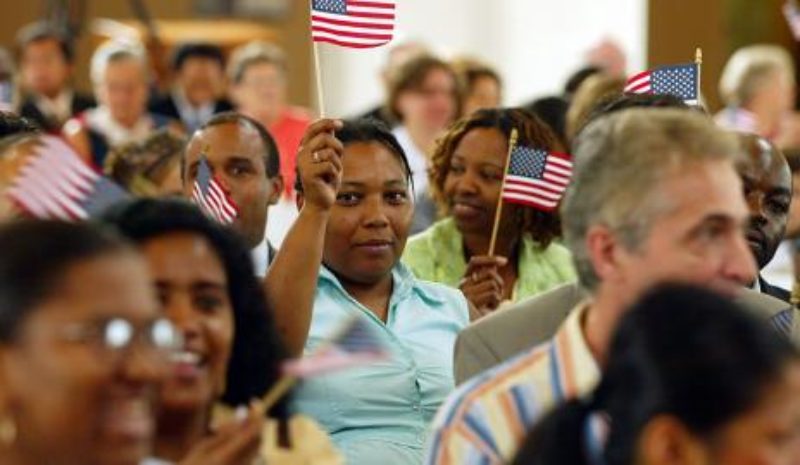FAQ: Why do Asylum Seekers Cross the U.S. Border Between Ports of Entry?
Why do those seeking asylum cross between entry points? Here’s a few common reasons:
Mexican immigration officials block asylum seekers from approaching U.S. border posts.
Even when asylum seekers try to approach U.S. ports of entry, Mexican officers turn some away by physically blocking their access. Observers documented Mexican officers blocking asylum seekers’ access to ports of entry on the Hidalgo-Reynosa bridge, at the San Ysidro port of entry, and forcibly removing them from the Brownsville-Matamoros bridge. Reports indicate that these actions have been taken at the request of CBP officers. This practice places Mexican asylum seekers at particular risk, as their persecutors operate in the country that they are physically prevented from fleeing.
Customs and Border Protection officers “turn back” asylum seekers at ports of entry.
CBP officers turn back asylum seekers by outright refusal or by telling them to come back another day. In 2017, Human Rights First and other organizations documented numerous examples of illegal turn-backs at multiple crossing points, including the California-Mexico San Ysidro port of entry and Texas-Mexico ports of entry (Hidalgo-Reynosa, Brownsville-Matamoros, Roma-Ciudad Miguel Aleman, Progreso-Nuevo Progreso, Laredo, Paso del Norte, and Stanton Street). The Washington Office on Latin America (WOLA) similarly documents turn backs by U.S. officials on the Mexico side of the Arizona Nogales port of entry, and the Texas ACLU’s Border Rights Center reports that CBP officers turn away asylum seekers throughout Texas.
Processing slow-downs increase dangers and crossings between ports.
CBP officials have restricted the number of asylum seekers processed at ports of entry daily, forcing asylum seekers to wait for extended periods in dangerous and difficult conditions or to cross the border between ports. Border officials claim they restrict the numbers of asylum seekers processed because of capacity issues, but reports show that CBP processing rooms are not full and that there is an orchestrated effort to reduce asylum processing. This month WOLA reported that CBP has “notably slowed” its processing of asylum seekers at ports of entry. Each month since June, CBP has processed only four thousand individuals at ports of entry, down from six thousand in prior months.
These slow-downs create bottlenecks and long waits in Mexico. At San Luis, Nogales, and Calexico, CBP officers let in one to three families per day while asylum seekers wait three to six weeks for processing through the port of entry. In Ciudad Juarez, San Luis, and Nogales, parents and children have been forced to sleep on the concrete sidewalks outside the ports of entry for weeks. Access to medical care is nonexistent, and families struggle to find places where they can bathe or even use a restroom. Even those who can find shelter often go hungry and become sick due to poor conditions, with children facing particular risks of illness.
In September 2018, the Office of Inspector General for the Department of Homeland Security (DHS) stated that limiting the number of people allowed to seek asylum at ports of entry leads some “who would otherwise seek legal entry into the United States to cross the border illegally.”
Dangers in Mexico and along the borders.
Some asylum seekers face acute risks in Mexico, including murder, shootings, rape, kidnappings, and human trafficking. In Reynosa, Mexico, adjacent to the Hidalgo port of entry in Texas, there is “continuous shooting throughout the city,” as cartel groups, gangs, and the Mexican military engage in violent clashes. The former target asylum seekers for kidnapping and ransom. Between 2011 and 2018, over one thousand migrants were kidnapped in Tamaulipas, Mexico—the state where Reynosa is located. Ciudad Juarez, which borders El Paso, is also notoriously dangerous due to violence and conflict between the cartels. Many asylum seekers face grave risks in these dangerous border towns, and some cross between ports of entry due to these dangers, particularly as great distances separate some ports of entry.
Lack of information, misinformation, and avoiding dangers.
Many people fleeing violence and persecution lack accurate information about how to seek refuge in the United States and may only hear rumors and misinformation from smugglers and other migrants they encounter along their route. One asylum seeker explained to Human Rights First that he thought his only option for entering the United States was to cross between ports of entry because other migrants told him that authorities from both governments would turn him away. In August 2018, the Texas Tribune interviewed more than a dozen asylum seekers who crossed the Rio Grande and turned themselves into CBP seeking refuge. Of this group, only two heard that asylum seekers could request protection at official crossing points. Due to difficulties and dangers traveling through Central America and Mexico, some asylum seekers turn to smugglers. With the deadly cartels controlling areas around many ports of entry, smugglers transport asylum seekers to remote locations and direct them to cross, as WOLA reports.
Asylum seekers should not be refused protection because of the many hurdles placed in their path to safety. In fact, U.S. law and international treaty commitments guarantee refugees an avenue to seek asylum regardless of how they entered the country.
